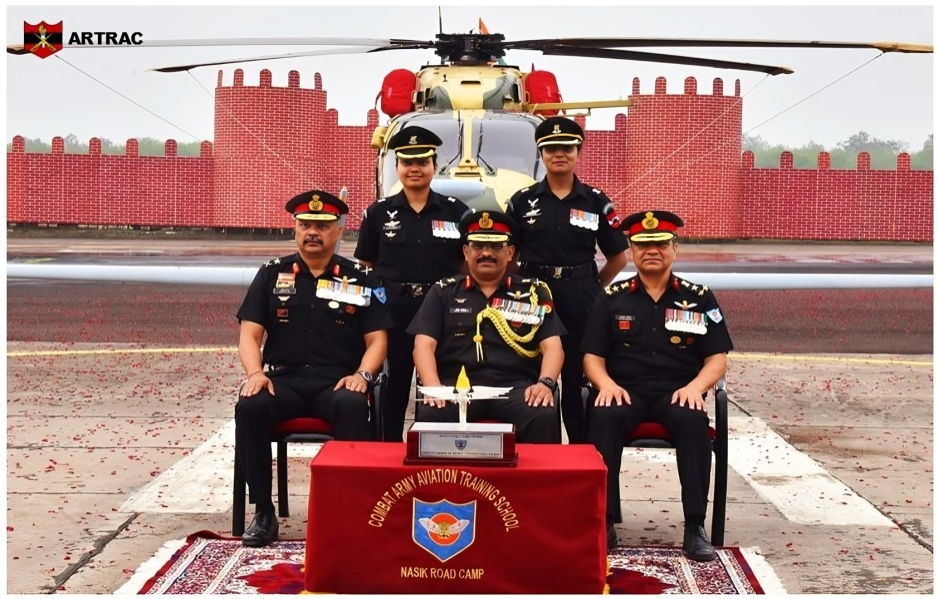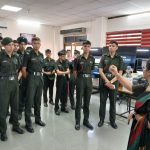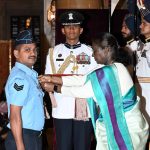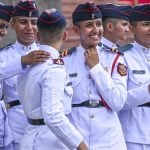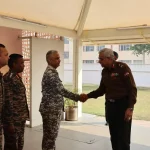The Indian Army marked a momentous occasion in its history as Major Jagmeet Kaur and Major Isha Thakur became the first women to be designated as Remotely Piloted Aircraft Systems (RPAS) instructors. The officers were awarded the prestigious Instructors Badge after successfully completing the demanding RPAS Instructors Course at the Combat Army Aviation Training School (CAATS) in Nashik.
The recognition ceremony was held at CAATS and was attended by senior military officers and dignitaries. A memorable photograph from the event shows the two pioneering officers seated with their fellow soldiers in front of a ceremonial table draped in red, a lamp glowing at the center — symbolizing enlightenment and achievement. A helicopter stationed nearby and a grand Red Fort backdrop added a fittingly majestic tone to the celebration.
Major Jagmeet Kaur, a fourth-generation Army officer, and Major Isha Thakur have emerged as trailblazers in a field traditionally dominated by men. Their success marks a major step forward for the Indian Army’s vision of greater gender inclusion, reflecting the broader national commitment to the empowerment of women through the Nari Shakti initiative. Their achievement is being hailed as a landmark moment in the journey towards a more inclusive and future-ready defense force.
The Army Training Command (ARTRAC) acknowledged the significance of the event, noting it as a leap forward in the empowerment of women aviators. The legacy of women like Captain Abhilasha Barak, who became the Army Aviation Corps’ first woman combat aviator in 2022, continues to grow stronger with each such milestone.
CAATS has long served as a center of excellence for military aviation training, preparing officers in cutting-edge aerial warfare, operational concepts, and doctrine development. Under the leadership of Officiating Commandant Brigadier Satyavir Shokeen, the institution continues to play a vital role in adapting the Indian Army to the challenges of modern warfare. The inclusion of women instructors in RPAS training adds a new dimension to the school’s legacy and to the evolving role of the Army Aviation Corps as a force multiplier.
This development also aligns with a global trend of growing female representation in military aviation roles. In India, the progress has been notable — from Flight Lieutenant Shivangi Singh, the nation’s first female Rafale pilot, to Squadron Leader Avani Chaturvedi, among the first women to fly fighter aircraft in combat roles. The achievements of Major Kaur and Major Thakur now join this line of inspiring firsts.
Public reaction to the announcement has been overwhelmingly positive, with many praising the dedication, resilience, and excellence of the two officers. As India continues its journey of modernizing and diversifying its armed forces, the success of these pioneering women will no doubt encourage a new generation of aspirants ready to serve the nation with pride and purpose.
The Indian Army’s embrace of gender diversity, as symbolized by this historic moment, reflects a broader national ethos — one that believes in equal opportunity, capability-driven roles, and the transformative power of inclusion.

